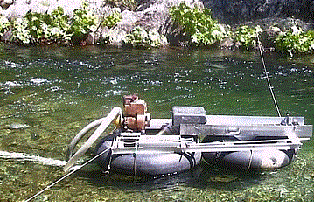

Neither of these shows exactly what we did with the filter media. Here are a couple rough sketches I made while planning this out. This helps stir the bottom chamber to avoid clogs and let the sediment settle out. At the bottom you can see angled pipes with 90s that inject the new water in a circular pattern into the bottom of the tank. This makes sure it drops straight down the center of the tower to maximize splashing.īelow shows the tower inserted into the barrel. Water comes in near the top of the tower through a small pipe with a 90-degree fitting inside. The “legs” at the bottom hold up the first layer of filter media (larger rocks / gravel on plastic grating) and maintain an open space at the bottom where solids can settle out. Here’s what the aeration tower looks like before it went into the barrel. The water then drops down inside the large pipe, ideally pulling some air along with it and mixing the air in with some nice splashing.

Water is pumped into the side of the large plastic pipe, which has an opening at the top for air. That thing in the center of the barrel is an aerator tower. The filtered water runs off the top of the barrel and back into the pond. The barrel drops water into the bottom, then filters it upwards through progressively smaller layers of stones, pumice, gravel, and composite filter media. The pond includes a submerged pump (Tetrapond 1000) with plumbing that runs up to an external barrel. Since water birds produce a lot of umm… “dirt” in the water, we wanted a pretty beefy filter to keep the water clean. This one is basically just a buried stock tank next to the bird coop. Prior to building the fish pond, we did a smaller pond for our pet ducks & goose. A while ago I posted about our garden pond and homemade filter swamp.


 0 kommentar(er)
0 kommentar(er)
